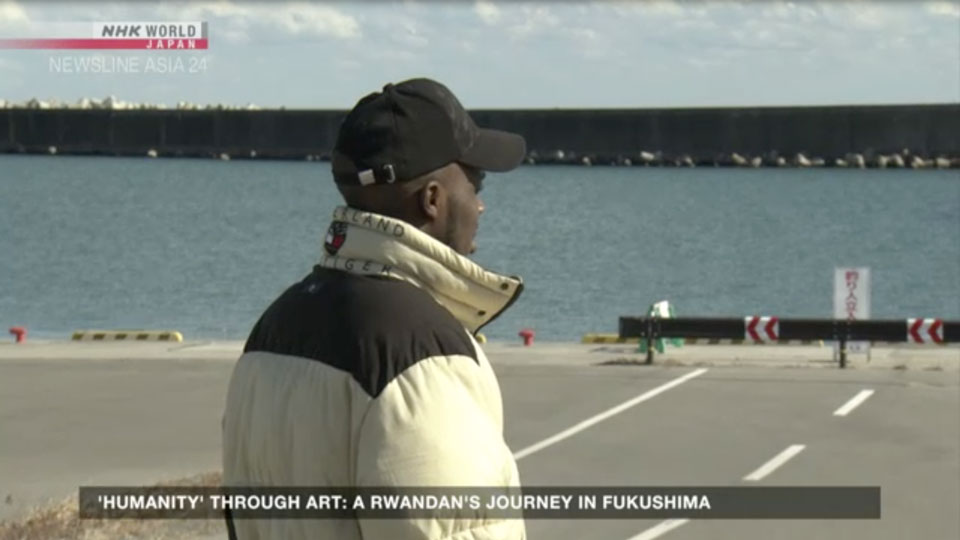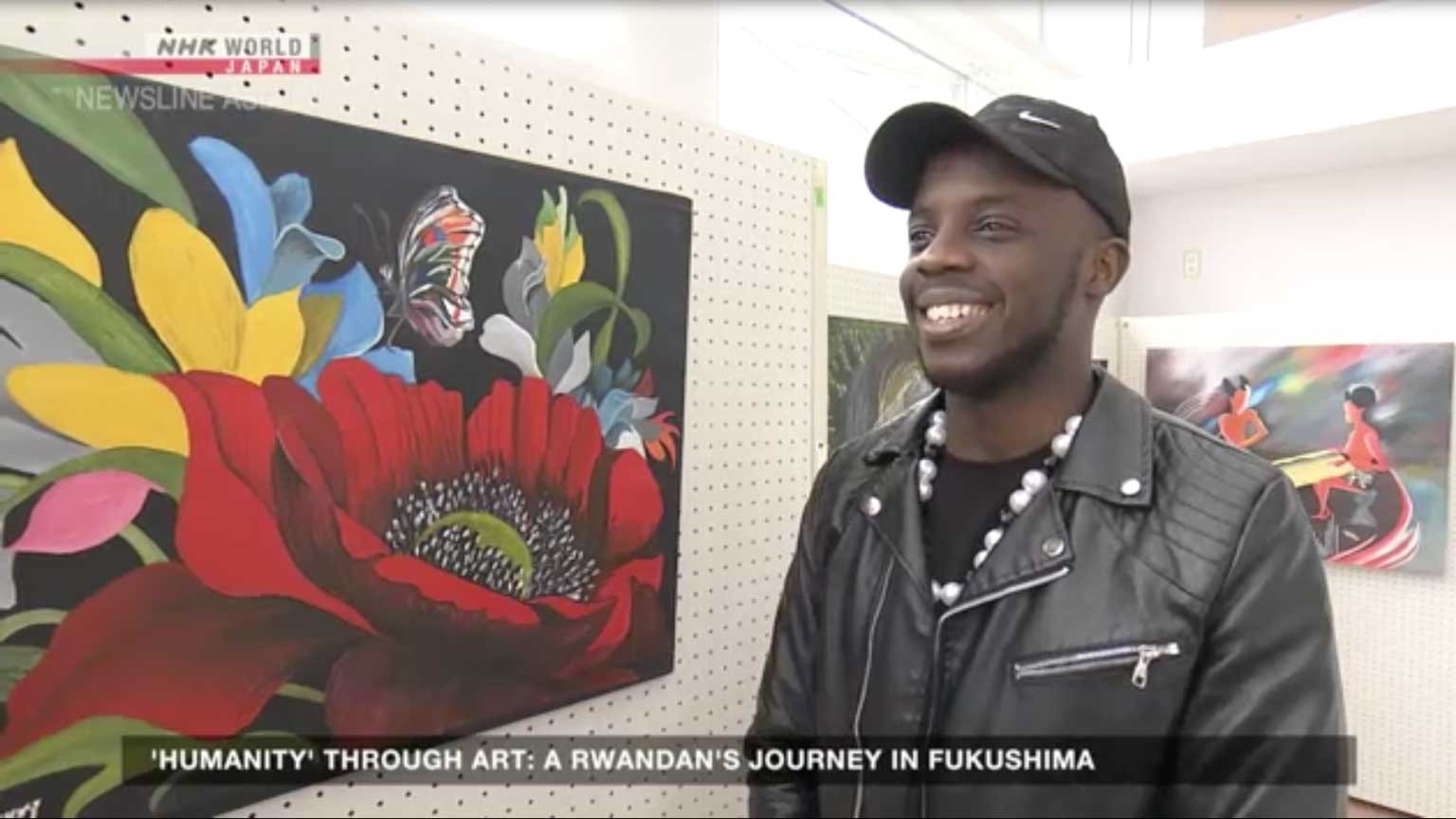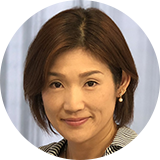Vibrant colors, bold compositions, and unique textures with African motifs make Uwayo Thierry's paintings jump off the canvas. The 24-year-old Rwandan painter recently showed his work in Fukushima, his final stop on a two-month tour of Japan.
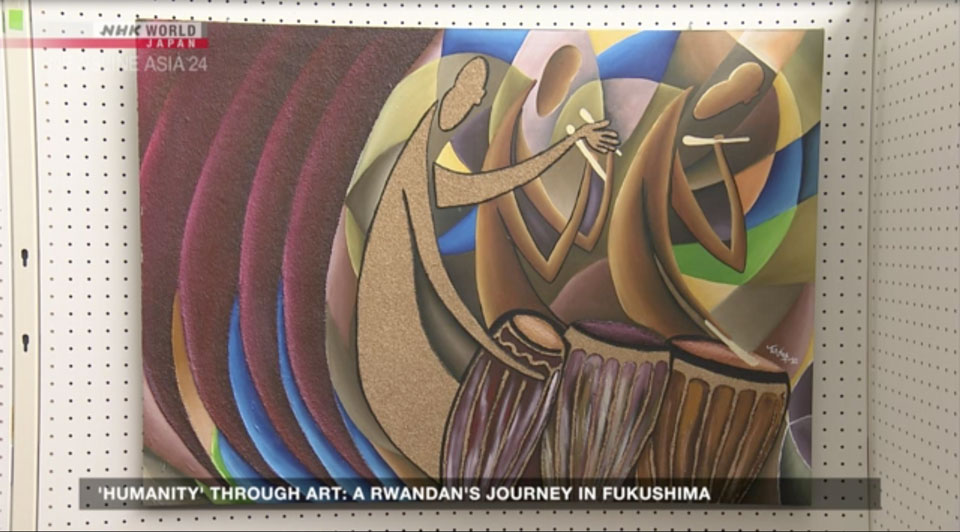
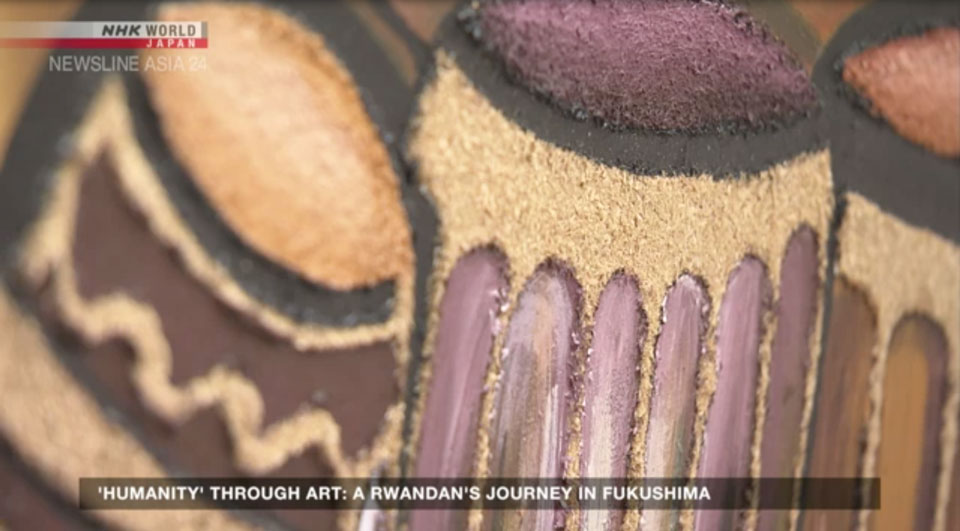
Thierry hopes his art contributes to people's healing in Fukushima and Rwanda, two places that have suffered large-scale traumatic events. Around 20,000 people died after an earthquake and tsunami struck Japan on March 11, 2011, triggering a triple meltdown at a nuclear power plant. The slaughter in Thierry's homeland took place over roughly 100 days in 1994, and claimed more than 800,000 lives.
"I didn't believe that I could have that kind of an exhibition in Fukushima, but the dream has come true and I'm very excited for it," Thierry said.
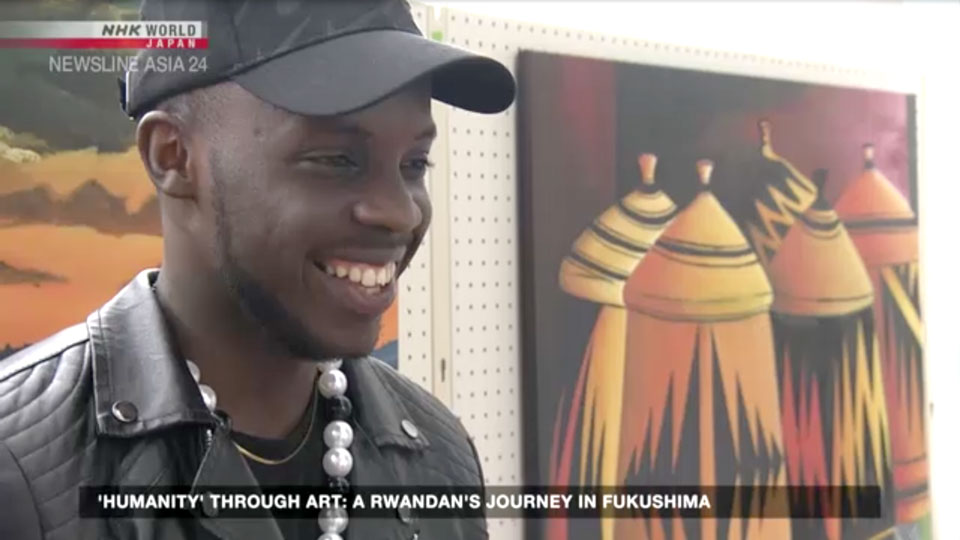
'The fruits of what you had planted'
Thierry's trip would not have been possible without the support of Towari Marie Louise, a woman from Rwanda who is now a naturalized Japanese citizen. She has made Fukushima her home and has spent years helping survivors of the 2011 disaster.
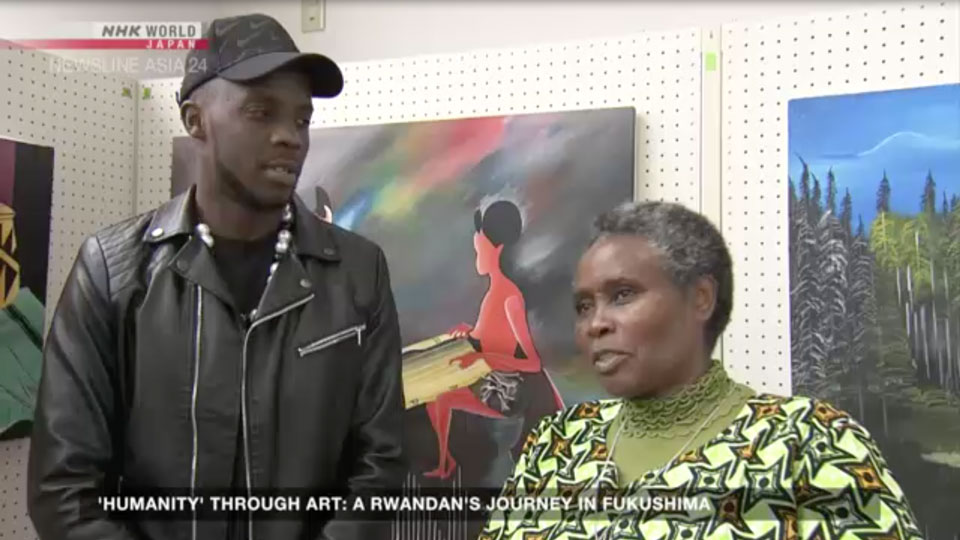
Towari is a genocide survivor who fled the violence with her young children. She had previously studied in Fukushima, and she was able to resettle there with help from friends.
She and a group of Japanese supporters raised funds to establish a school in Rwanda in 2001. She said her goal was to use education to ensure the tragedy of 1994 would never happen again.
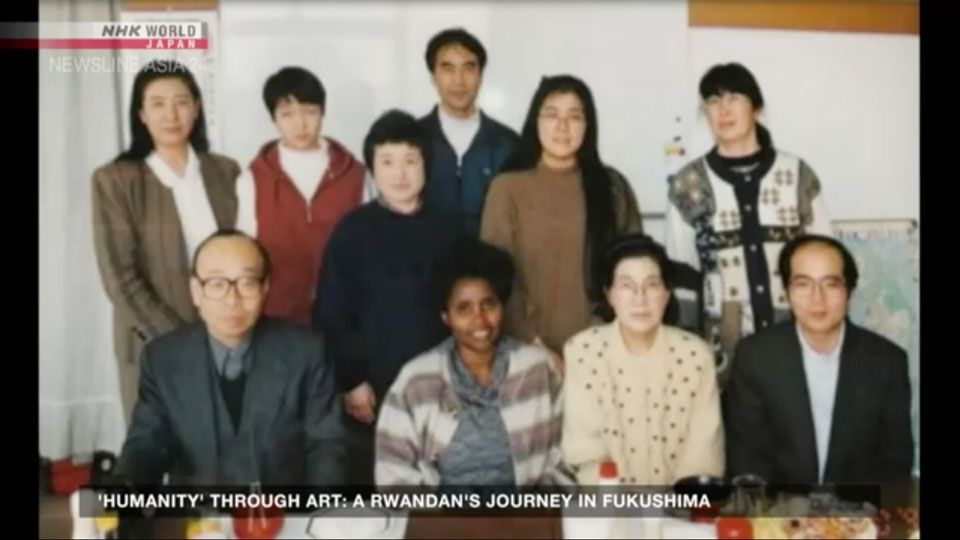
The school was where she met Thierry, a young student who would grow up to become a professional artist.
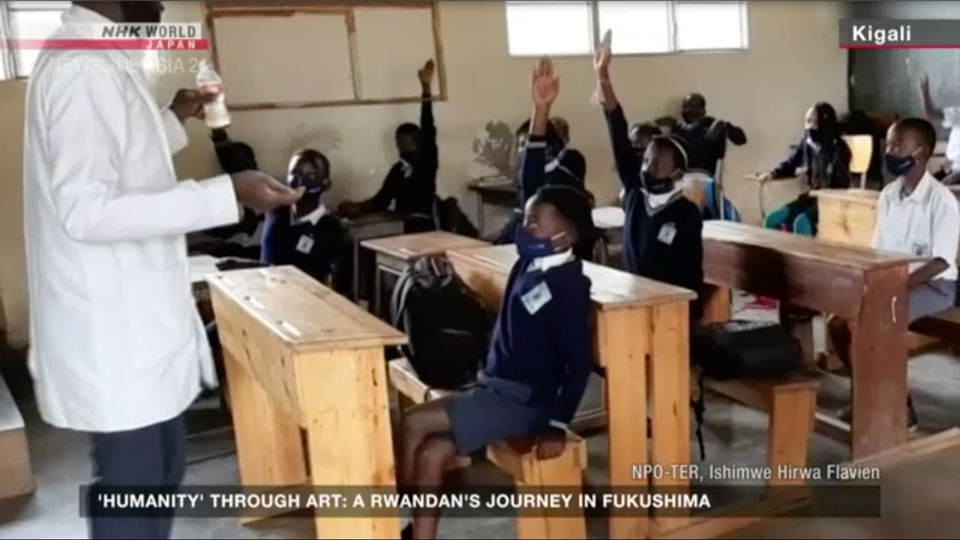
"I'm the luckiest person in the world," Towari said on the opening day of Thierry's show. "It doesn't happen often that you can see the fruits of what you had planted."
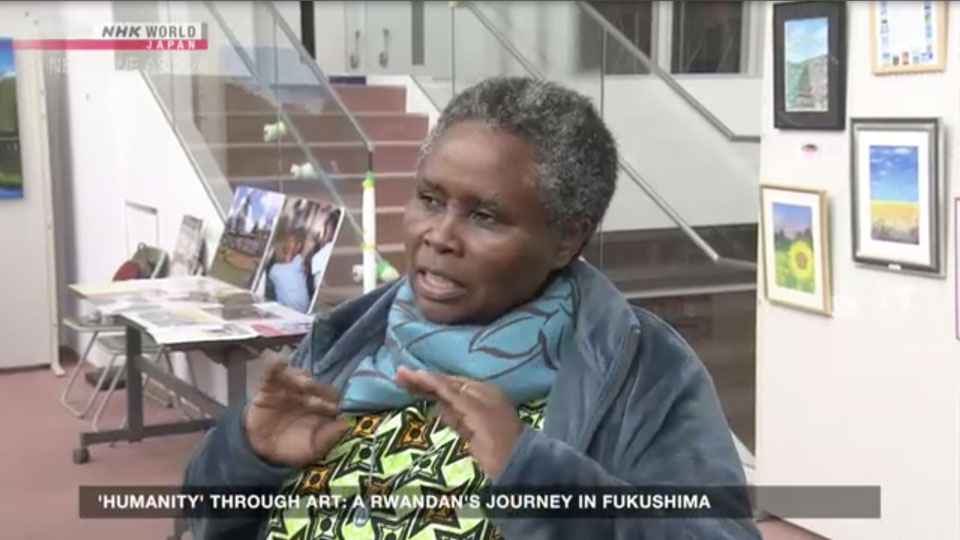
The exhibit included a painting Thierry gave to Towari for her birthday a few years ago. He explained its darkness depicts where he used to be, a place without dreams or hope. The red flower represents Towari, who has always been open and approachable.
"This butterfly is me," he said. "After meeting this flower, she shows me that I can be an important person to this world."
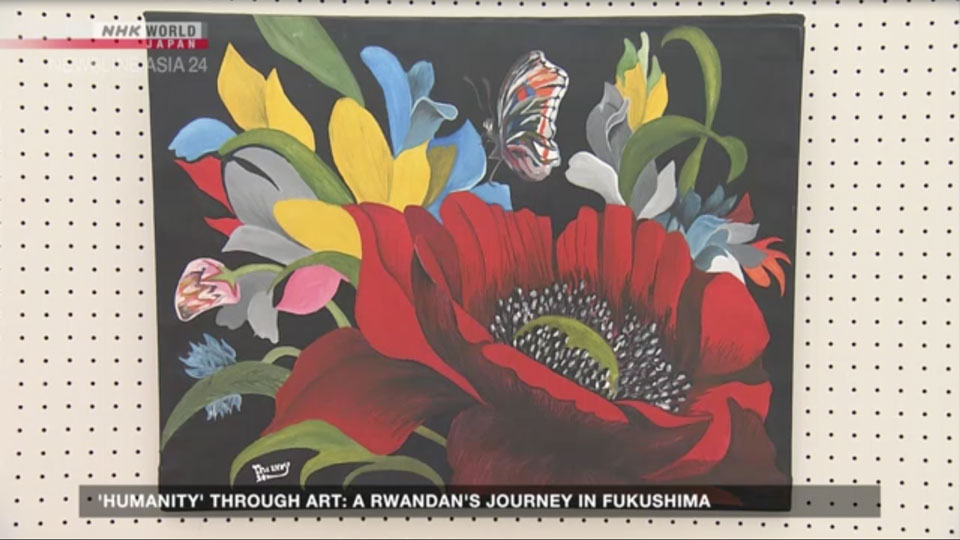
Work resonates with survivor
Towari introduced Thierry to some of the people she has helped in the years since the 2011 disaster, which displaced communities and caused enormous upheaval.
One of them was Amano Yoshiko, who said she was never particularly interested in paintings but was moved to buy Thierry's work showing a pair of zebras after she saw it in Towari's social media post. She said she saw the image while she was hospitalized, recovering from major surgery, and she feels positive energy every time she looks at it.
"This reminded me of me and my son," Amano said. "I was very weak, we were evacuating from our hometown — just the two of us."
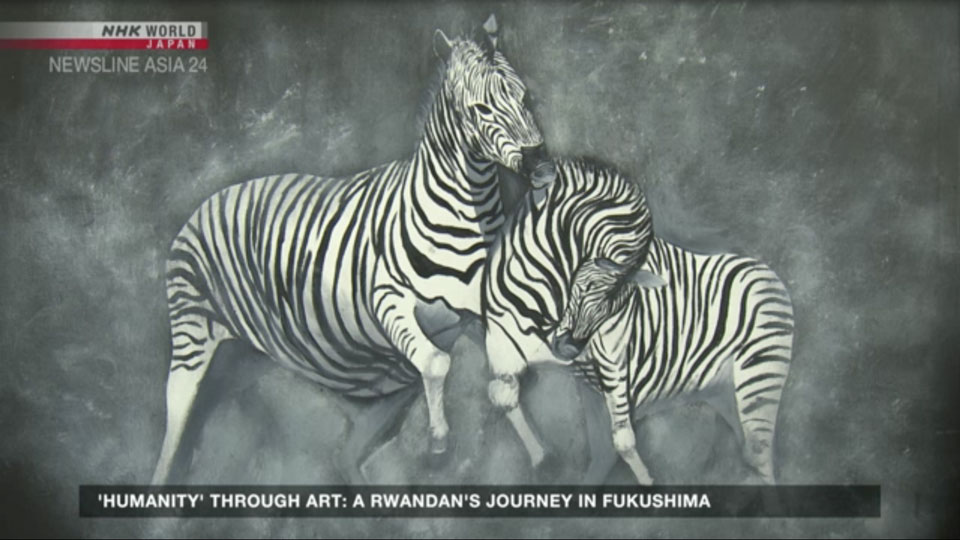
Thierry was touched to hear that his work had resonated with her.
"If someone can love my art and buy it, it's like, it makes me happy because it seems like I'm doing something which is good."
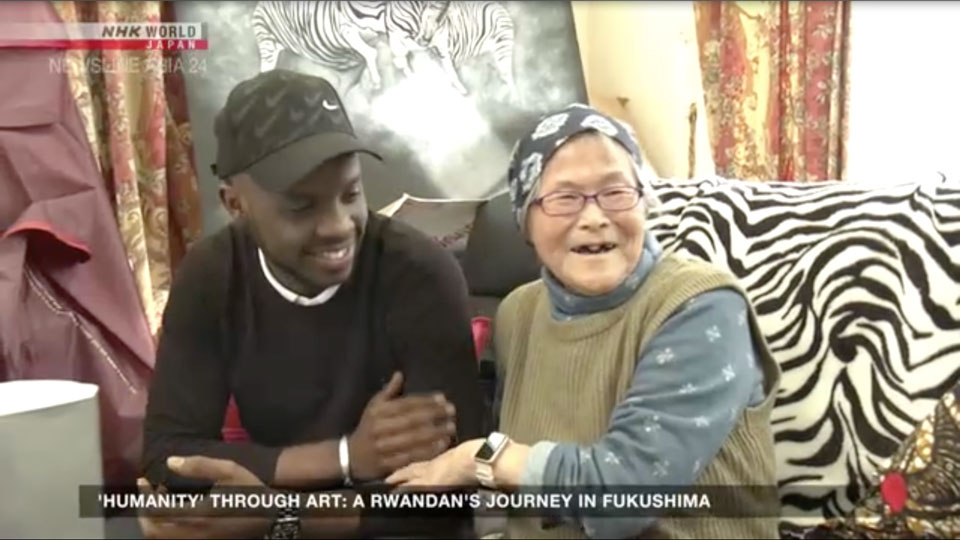
United by rejuvenation
Towari wanted Theirry to understand the devastation wrought by the 2011 disaster and how people there have rebuilt their lives, just as people in their native country did after the genocide. She brought him to the Great East Japan Earthquake and Nuclear Disaster Memorial Museum in Futaba Town, among other places.
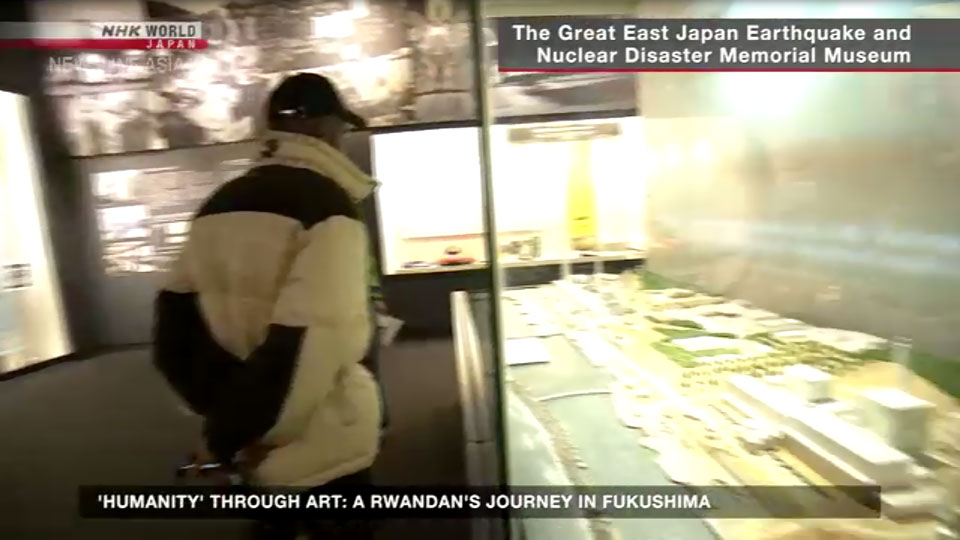

For his next work, Theirry said he plans to create a piece inspired by his Fukushima trip. He is not yet sure exactly what it will look like, but he knows it will embody the ideals that he and his mentor Towari hold dear: "Be human, and reach out to people around you."
Theirry said Rwanda and Fukushima, two places that have endured catastrophes, are united by the power of rejuvenation, a link that he can strengthen with art.
"We need something to change this world," he said, "not to destroy, but to build."
